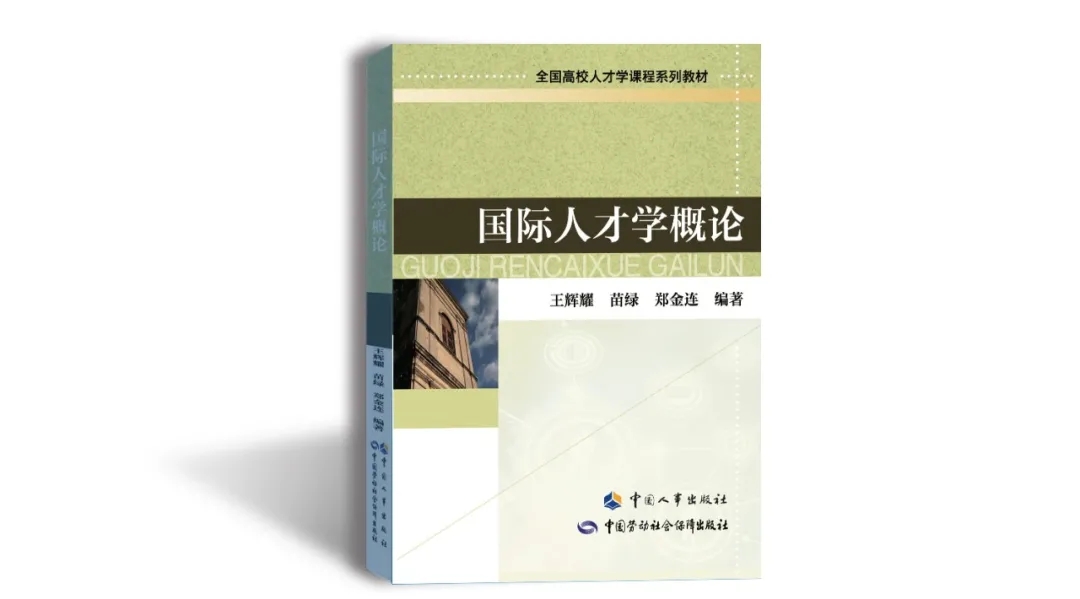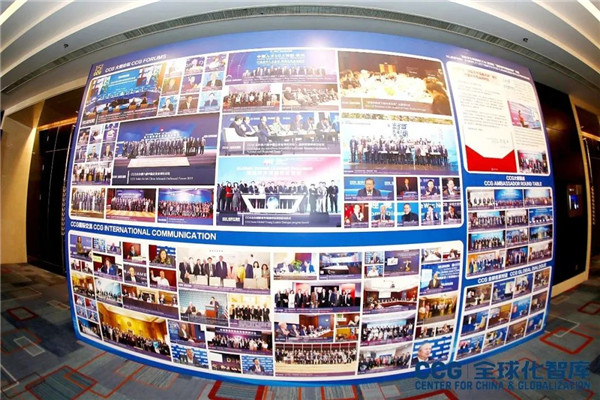CCG releases new book on global talent studies
January 07 , 2021
Recently, An Introduction to Global Talent Studies, one of a series of textbooks on talent studies of Chinese universities, was published. This book is compiled by Wang Huiyao, president of Center for China and Globalization (CCG), Miao Lu, secretary-general of CCG, and Zheng Jinlian, deputy secretary-general of CCG, and is published by the China Human Resources & Social Security Publishing Group.
This book features empirical research and builds up a systematic framework for global talent management and development. It aims to improve China’s talent performance on a scientific basis, so as to provide new ideas and methods for talent management and cultivation. This book fills a gap in the area of special research on global talent studies.
In 2020, COVID-19 swept the world and heavily impacted the global economy, exerting profound influence on the flow and development of global talent. Adapting to the domestic and international situation, China has continued to promote new global talent policies. From the development of the Guangdong-Hong Kong-Macao Great Bay Area to the China (Hainan) Free Trade Zone, more and more efforts are put into attracting global talent. China has placed great importance on global talent management and achieved impressive results. Research on global talent has been continually expanding and Chinese talent policies continue to view breakthroughs and innovations and are gearing toward international standards.
Based on the authors’ studies and practices in the field of global talent, the book launches theoretical explorations and puts forward future directions for the development of global talent studies as an emerging subject. Firstly, scholars should take relevant practical experience of global talent as the starting point and focus their research on the development of global talent by assessing their social contribution and studying factors that serve the growth of global talent. Furthermore, research on global talent studies as a social science should be combined with labor economics, human resources management and other theoretical underpinnings, so as to build up a solid research framework.
Thirdly, expanding the context of “global talent” is crucial in order to form a broader, more open and dynamic concept. Last but not least, we should broaden the scope of research topics on “global talent.” According to the book, nowadays, findings of global talent studies cover diverse areas, including the basic concept of global talent, global talent flows, global talent cultivation, global talent competitive strategy and global talent governance. In the future, in order to form a targeted and systematic research framework for global talent studies, it is necessary to examine global talent from multiple perspectives in depth.
The book consists of seven chapters. The introductory part synthesizes current understanding of global talent, explains the concept of global talent and elaborates on dimensions of research subjects as well as common research topics. This part also discusses the relations between global talent studies and its related subjects or areas.
The formation of global talent begins with the transnational mobility of global talent, which is analyzed in the book’s second, together with the contributing factors behind it. Moreover, this chapter also summarizes four main patterns of global talent flow, and examines the main features and monitoring index of the trend of global talent flow, so as to lay a solid foundation for discussions on future management of global talent, both nationally and internationally.
To follow, based on the evaluation of global talent flows, chapters 3 to 6 mainly explore the development and utilization of global talent in the domestic sphere. The third chapter investigates the concept, main characteristics and methods of global talent development and summarizes the main features and directions of the practice of global talent development. The fourth and fifth chapters list the strategic measures of global talent competition from both national and international perspectives, with a focus on the “consolidated” type of talent strategy represented by the US, the “catch-up” type of strategy represented by Germany, the “surpassing” type of strategy represented by Japan and the “defensive” type of strategy represented by India. Additionally, a review of China’s experience and strategies on global talent competition and a future outlook of China’s global talent development are also offered. Furthermore, chapter 6 discusses ways of promoting global talents’ adaption to the local environment from a practical point of view.
Chapter 7 tackles the management of global talent in light of global governance. Global talent management not only relates to a single country but it also involves bilateral and multilateral relations. This means it is necessary to discuss future ways of cooperation for the world to manage global talent flow from the perspective of global governance.
This book features in-depth theoretical research on the basis of tracking and summarizing the practical and research experience of both domestic and international talent-related work. Seeking to open up a specialized research area of global talent studies, this book summarizes and utilizes existing theories, connects all links of global talent studies and formulates a complete research framework. In this way, An Introduction to Global Talent Studies aims to provide theoretical support for China’s global talent works to be improved and promote the development of China’s global talent research.





